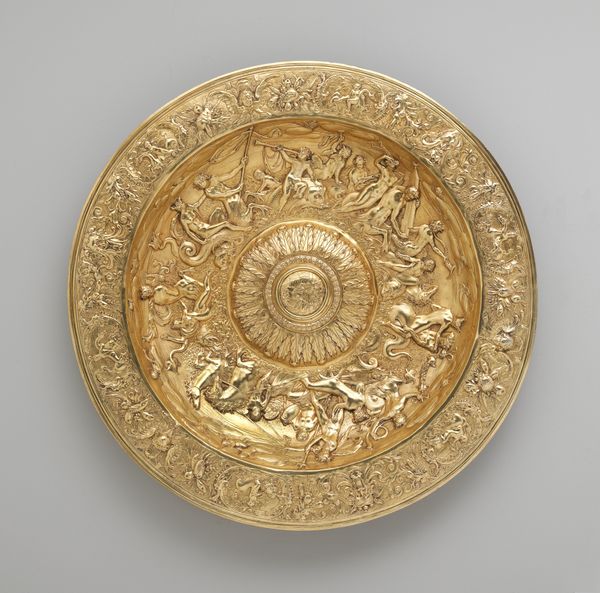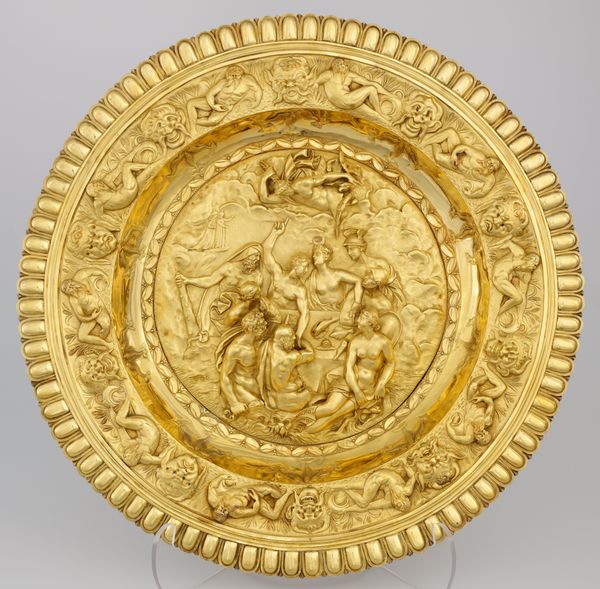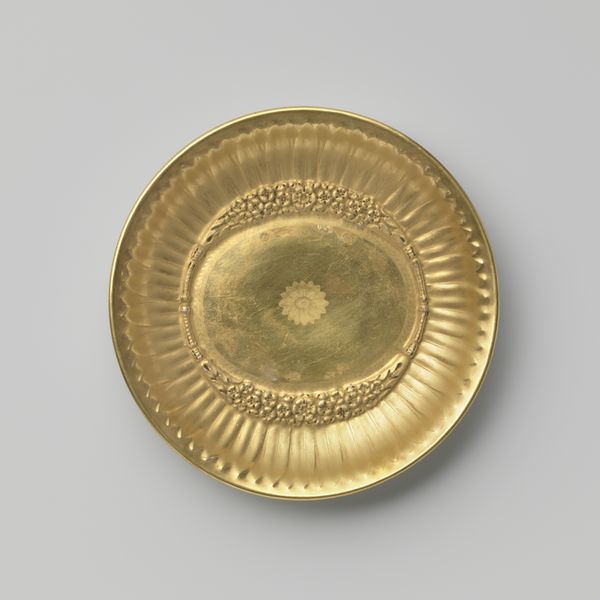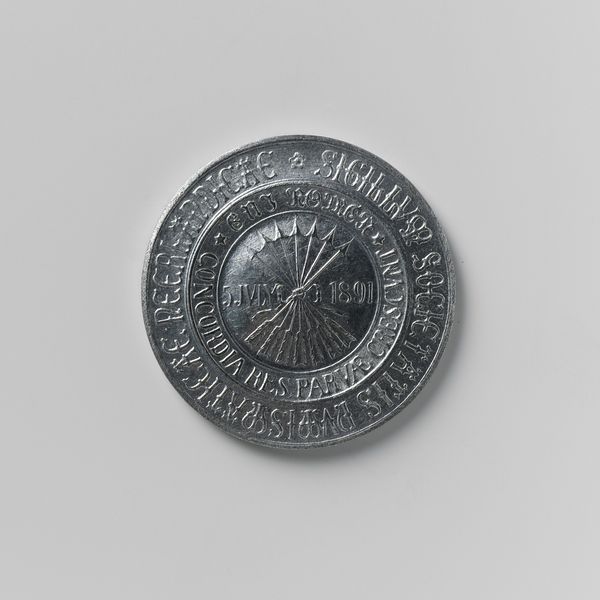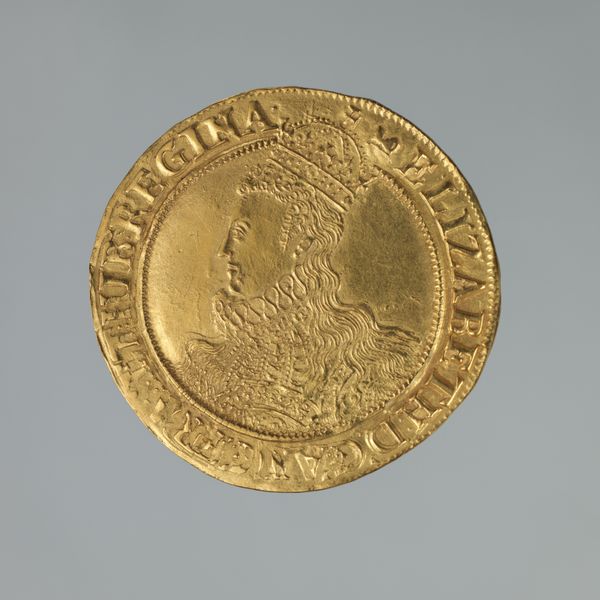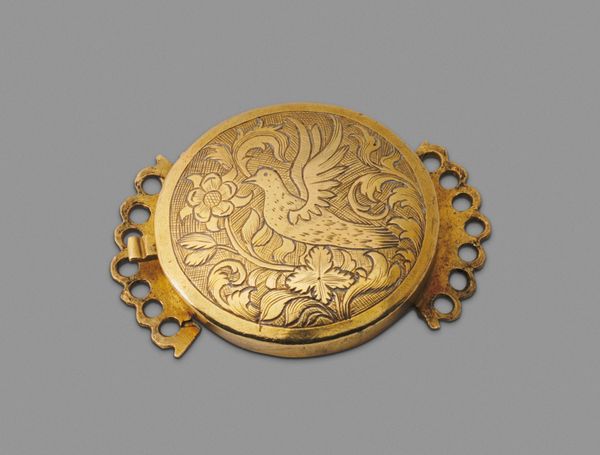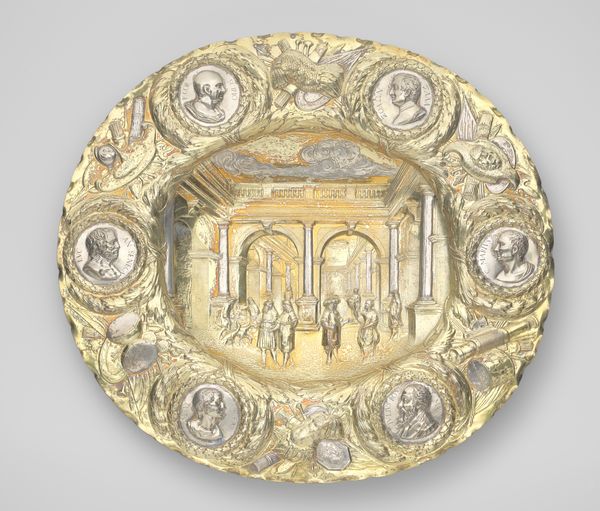
Galvanoplastische reproductie van een schotel met de Triomf van Neptunus en Amphitrite 1875 - 1880
0:00
0:00
metal, relief, bronze, sculpture
#
allegory
#
metal
#
greek-and-roman-art
#
relief
#
bronze
#
sculpture
Dimensions: diameter 43.8 cm, height 5.0 cm, weight 2577 gr
Copyright: Rijks Museum: Open Domain
This is a electroplated reproduction of a dish with the Triumph of Neptune and Amphitrite, made by Elkington & Co. The scene portrays Neptune, god of the sea, and his wife Amphitrite, surrounded by a host of sea creatures and mythological figures. During the Victorian era, electroplating allowed for the mass production of decorative objects. This brought luxury items to a broader audience, reflecting a shift in social values and access to art. But, how do these representations shape our understanding of power, divinity, and gender roles? Neptune, a symbol of masculine power and control over the seas, contrasts with Amphitrite. Her role is often depicted as secondary, a consort to the dominant male figure. While celebrating classical mythology, it also subtly reinforces prevailing social hierarchies. Consider how the artistry and materials contribute to the emotional and sensory experience. This gilded surface enhances its visual impact and symbolizes wealth, luxury, and power. It encourages us to reflect on the stories we tell, and the values we embody through art.
Comments
No comments
Be the first to comment and join the conversation on the ultimate creative platform.
